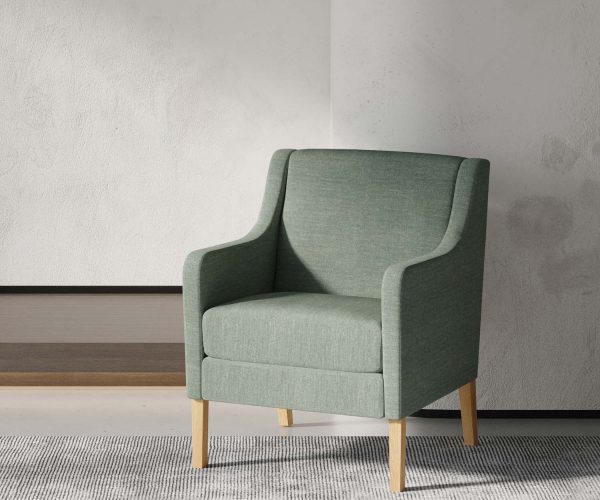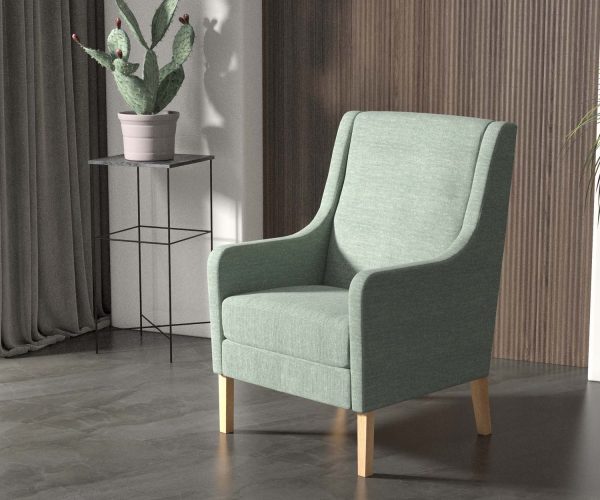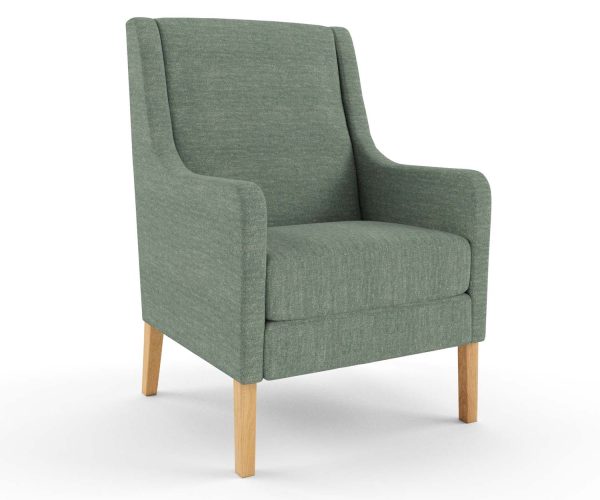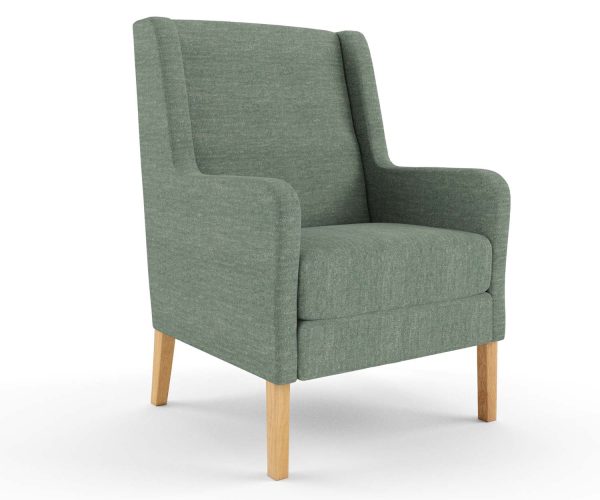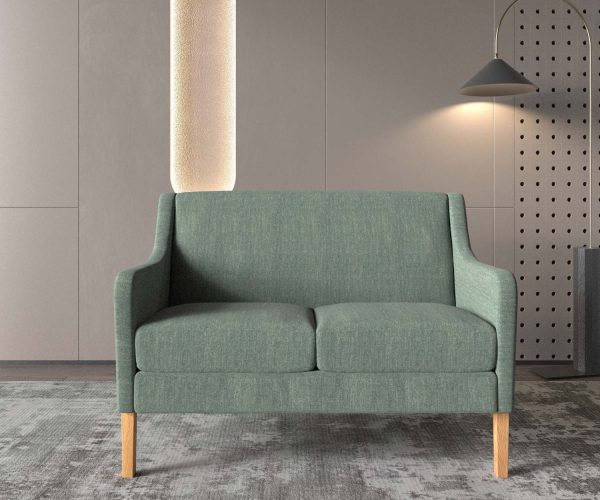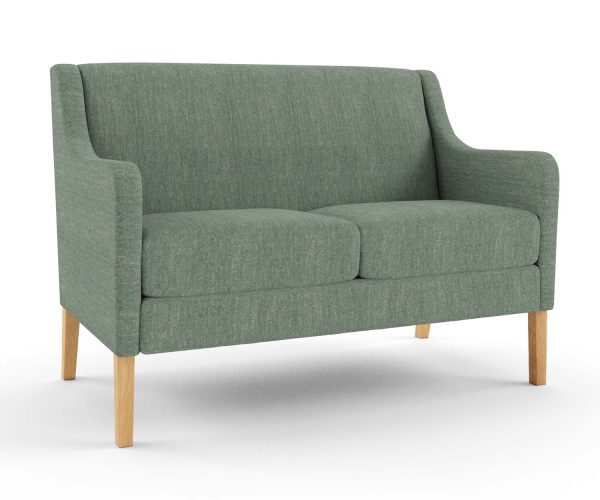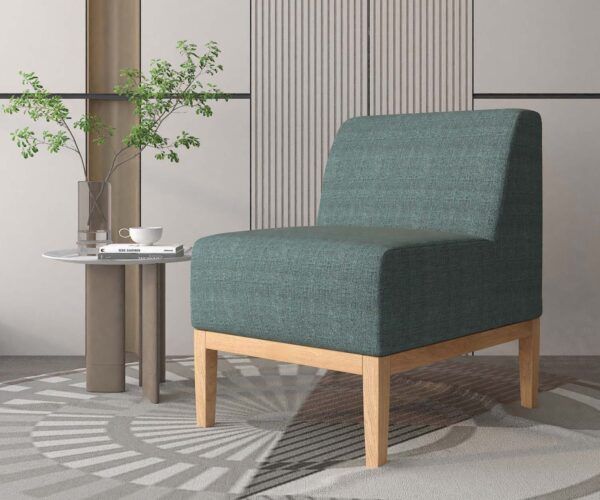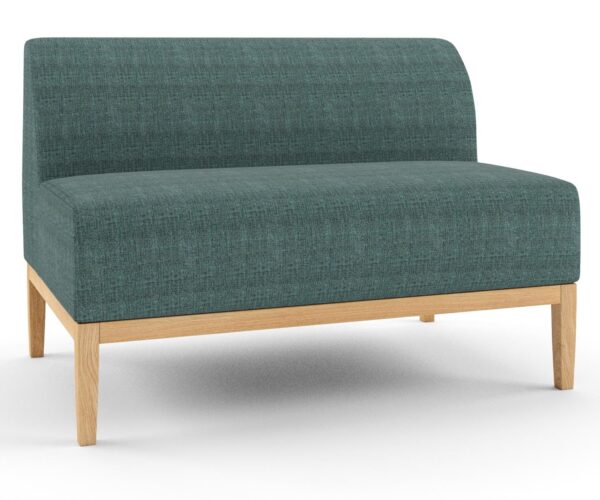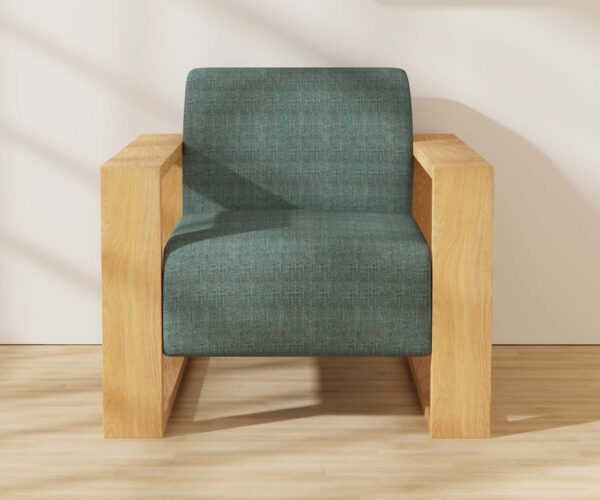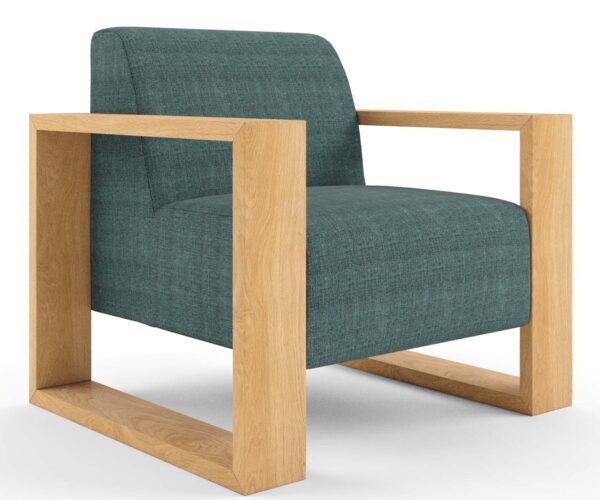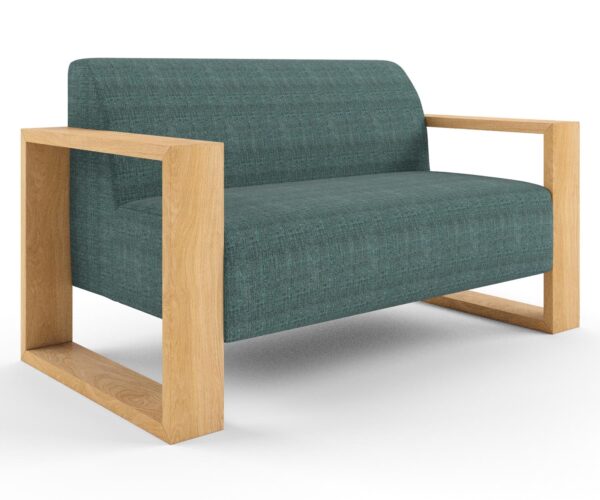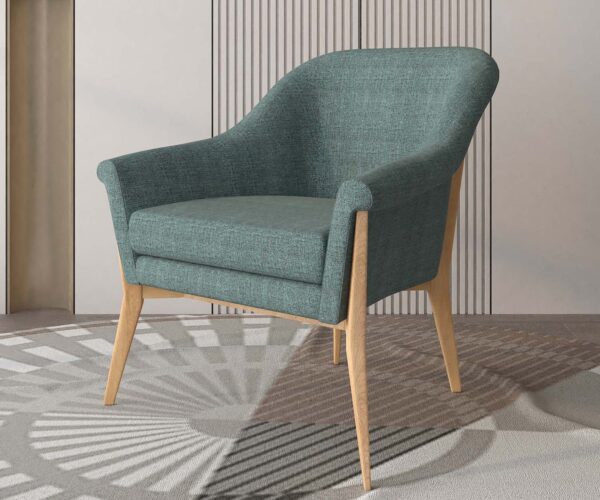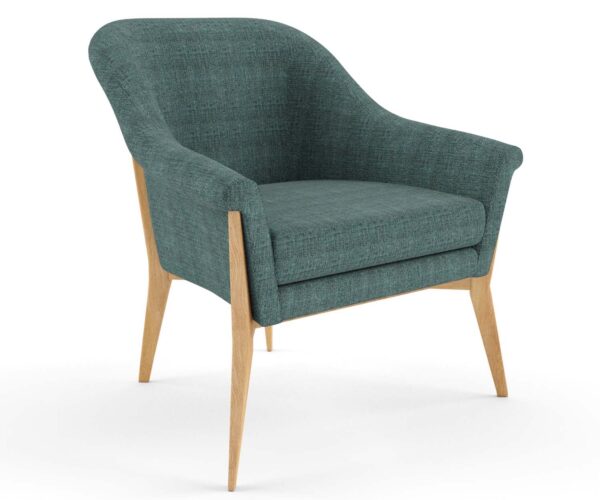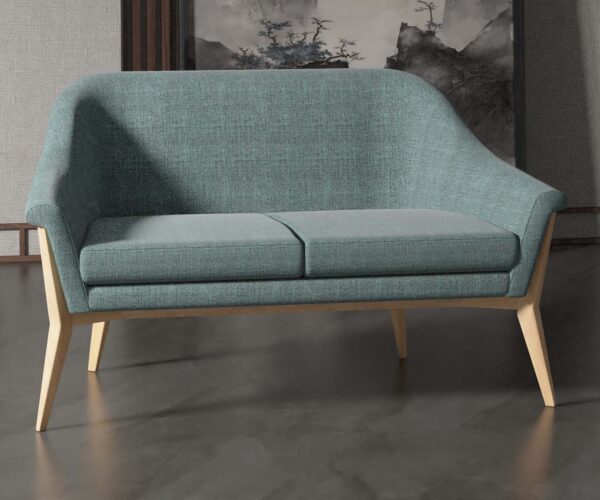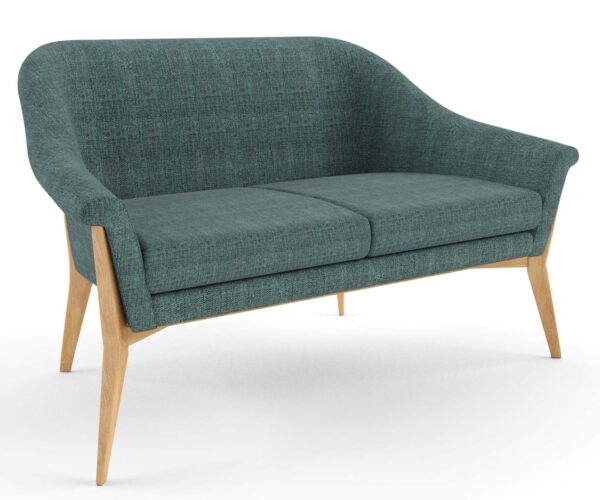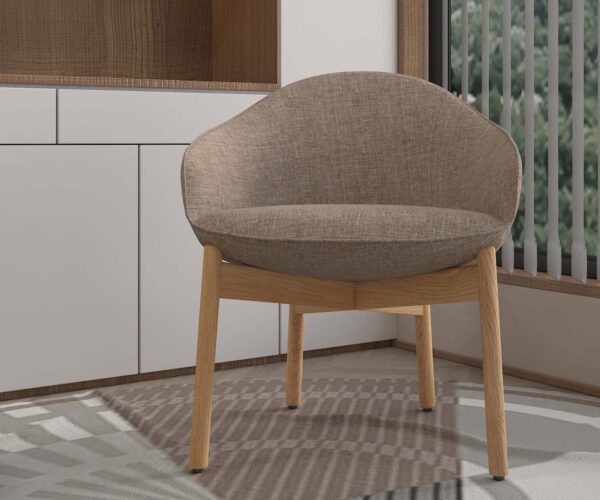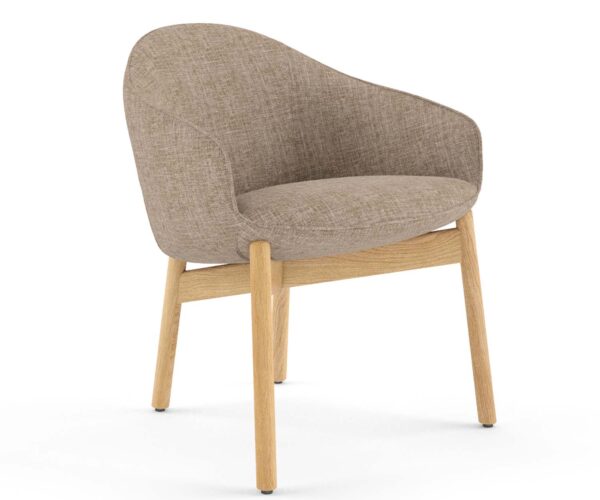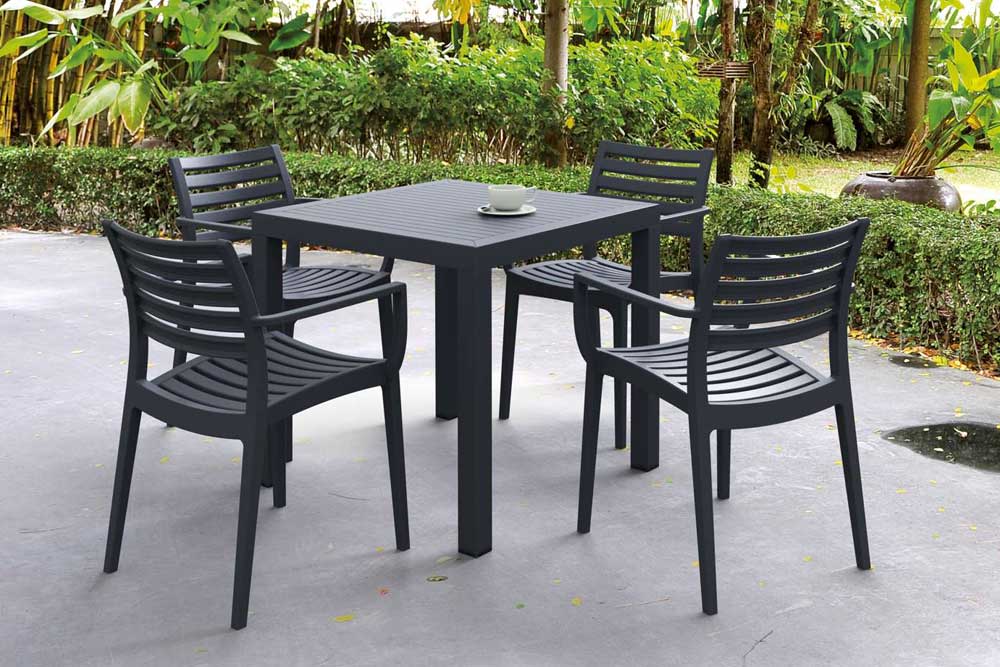Resident-Approved Furniture: 7 Strategies for Involving Seniors in the Selection Process

In Australian aged care facilities, the comfort and satisfaction of residents are paramount. One key aspect that greatly influences their well-being is the furniture around them. But how do you ensure that the furniture chosen meets the needs and preferences of the seniors who will use it every day? The answer lies in involving them directly in the selection process.
In this article, we’ll explore seven effective strategies for engaging seniors in choosing furniture that they’ll love and approve.
1. Create Resident Focus Groups to Discuss Furniture Choices
Gather a diverse group of residents representing different tastes, preferences, and mobility levels. Facilitate discussions where they can share their opinions, needs, and concerns regarding furniture. Encourage open communication and active participation to ensure their voices are heard.
How to form resident focus groups:
- Identify a diverse group of residents: Select participants representing different backgrounds, preferences, and mobility levels to ensure a broad range of perspectives.
- Schedule regular meetings: Set up a recurring schedule for focus group meetings to maintain consistency and allow residents to participate regularly.
- Provide a comfortable and accessible meeting space: Choose a quiet, well-lit area within the facility that is easily accessible for all participants, including those with mobility challenges.
- Facilitate open communication: Create a supportive environment where residents feel comfortable expressing their opinions, ideas, and concerns.
- Set clear objectives and agendas: Define specific goals for each focus group meeting and develop an agenda outlining discussion topics and activities.
- Encourage active participation: Use engaging techniques such as group discussions, brainstorming sessions, and hands-on activities to stimulate participation and collaboration.
- Respect diversity of opinions: Acknowledge and respect differing viewpoints among residents, fostering a culture of inclusivity and mutual respect.
- Document feedback and insights: Keep detailed records of discussions, ideas, and feedback shared during focus group meetings for reference and follow-up.
- Follow up on action items: Implement action plans based on focus group feedback and regularly update residents on progress and outcomes.
- Express gratitude and appreciation: Thank participants for their valuable contributions and recognize their role in shaping decisions and improvements within the facility.
2. Conduct Surveys and Feedback Sessions for Those Who Can’t Attend Furniture Focus Group Sessions
Distribute surveys or hold feedback sessions to gather input from residents who may not be able to attend focus group meetings. Use simple, accessible language and formats to ensure everyone can participate. Ask about their favorite furniture features, colours, materials, and any specific needs or preferences they have.
How to conduct surveys and feedback sessions:
- Design simple and accessible surveys or feedback forms that cater to different communication abilities and preferences.
- Include a variety of questions covering topics such as favorite furniture features, colours, materials, comfort preferences, and specific needs or concerns.
- Offer multiple formats for completing surveys, including paper-based forms, online surveys, or verbal interviews, to accommodate varying preferences and accessibility requirements.
- Ensure confidentiality and anonymity of responses to encourage honest feedback and participation.
- Schedule dedicated feedback sessions where residents can share their thoughts and preferences in person or virtually.
- Provide clear instructions and assistance for residents who may need help completing surveys or expressing their opinions.
- Create a welcoming and comfortable environment for feedback sessions, ensuring that residents feel relaxed and encouraged to share their thoughts openly.
- Facilitate discussions and encourage residents to elaborate on their responses, sharing personal anecdotes or examples to provide context.
- Use visual aids such as photographs, samples, or illustrations to help residents visualize furniture options and clarify survey questions.
- Offer incentives or rewards for participation, such as small tokens of appreciation or opportunities to win prizes, to motivate residents to engage in the feedback process.
- Follow up with residents to provide updates on how their feedback was used to inform furniture selection decisions, demonstrating that their input was valued and acted upon.
3. Provide Visual Inspiration for Furniture Design and Materials
Bring samples of furniture materials, fabrics, and designs to the facility for residents to see and touch. Create mood boards or visual displays showcasing different styles and options. Encourage residents to express their likes and dislikes, helping them visualize how the furniture will look and feel in their living spaces.
How to get started with visual inspiration:
- Create mood boards showcasing different furniture styles, colours, and materials.
- Display fabric swatches and samples of upholstery options for residents to touch and feel.
- Use catalogs or magazines featuring furniture designs that cater to seniors’ needs and preferences.
- Set up visual displays in common areas or activity rooms where residents can explore furniture options at their leisure.
- Incorporate virtual tours or online galleries showcasing furniture collections available for selection.
- Arrange showroom visits or field trips to furniture stores to allow residents to see a variety of options in person.
- Utilize digital tools such as tablets or computers to browse online furniture catalogs and design websites for inspiration.
- Provide before-and-after photos of past furniture projects within the facility to illustrate the transformative power of design.
- Encourage residents to bring in photos or clippings of furniture they admire from their own homes or past experiences.
- Collaborate with interior designers or decorators to create concept boards tailored to the preferences and needs of the resident community.
4. Arrange Mock Room Setups
Set up mock room layouts with cardboard cutouts or temporary furniture arrangements to give residents a sense of scale and spatial orientation. Allow them to move the furniture around and experiment with different configurations. This hands-on approach helps residents feel empowered and involved in the decision-making process.
Things to consider for a mock room setup:
- Gather a selection of cardboard cutouts or temporary furniture pieces that represent different types of furniture (e.g., beds, chairs, tables).Choose a designated area within the facility where mock room setups can be arranged, ensuring it is easily accessible to residents.
- Invite interested residents to participate in the mock room setup activity, either individually or in small groups.
- Provide guidance and assistance to residents as needed, helping them visualize and arrange the furniture pieces in a way that mimics a real room layout.
- Encourage residents to experiment with different furniture configurations, considering factors such as space constraints, accessibility, and personal preferences.
- Allow residents to move the furniture around freely, adjusting placement and orientation to suit their needs and preferences.
- Facilitate discussions and encourage residents to share their thoughts and feedback on each mock room setup, noting what they like and dislike about the furniture arrangements.
- Take photographs or make sketches of the mock room setups to document residents’ choices and preferences for future reference.
- Use residents’ feedback and input to inform the final furniture selection decisions, ensuring that chosen pieces align with their desires and needs.
- Express appreciation to residents for their participation and input, acknowledging the importance of their contributions to the furniture selection process.
5. Offer Trial Periods to Test Furniture
Partner with furniture suppliers to arrange trial periods where residents can test out different furniture pieces in their own rooms. This allows them to experience firsthand how the furniture feels and functions in their daily lives. Encourage residents to provide feedback and suggestions for improvement based on their trial experiences.
Steps for offering a trial period:
- Partner with furniture suppliers: Establish partnerships with reputable furniture suppliers willing to participate in trial period arrangements.
- Select a variety of furniture pieces: Choose a selection of furniture pieces, including chairs, tables, and bedroom furniture, to offer residents a comprehensive trial experience.
- Coordinate logistics: Arrange for the delivery, setup, and removal of trial furniture pieces according to residents’ preferences and facility guidelines.
- Communicate with residents: Inform residents about the opportunity to participate in trial periods, explaining the purpose and logistics of the program clearly.
- Customize trial experiences: Tailor trial experiences to individual residents’ needs and preferences, allowing them to select specific furniture pieces to test in their own rooms.
- Establish trial duration: Determine the length of the trial period, ensuring it provides residents with sufficient time to evaluate the comfort, functionality, and suitability of the furniture.
- Gather feedback: Encourage residents to provide feedback throughout the trial period, soliciting their opinions on aspects such as comfort, aesthetics, durability, and ease of use.
- Document observations: Keep detailed records of residents’ feedback, observations, and preferences during the trial period to inform final furniture selections and future procurement decisions.
- Evaluate outcomes: Assess the outcomes of the trial period, considering residents’ feedback, preferences, and any issues or concerns identified during the testing phase.
- Make informed decisions: Use the feedback gathered during the trial period to inform furniture purchasing decisions, selecting pieces that align with residents’ preferences and meet facility standards.
- Express appreciation: Express gratitude to residents for their participation in the trial period, acknowledging their valuable contributions to the furniture selection process.
6. Host Furniture Solution Design Workshops
Organize interactive design workshops where residents can collaborate with designers or staff members to co-create furniture solutions. Provide tools and materials for residents to sketch or prototype their ideas. This collaborative approach fosters creativity and innovation while ensuring that furniture designs meet residents’ unique needs and preferences.
How to get started with hosting design workshops:
- Select a suitable space: Choose a designated area within the facility that is spacious, well-lit, and easily accessible for all residents.
- Gather necessary materials: Provide residents with basic design tools such as sketch pads, pencils, markers, rulers, and craft supplies to facilitate their creative process.
- Collaborate with designers: Invite interior designers or design professionals to facilitate the workshops and provide guidance on furniture design principles and techniques.
- Schedule workshop sessions: Plan and schedule multiple workshop sessions to accommodate residents’ availability and ensure ample time for brainstorming, ideation, and collaboration.
- Promote participation: Encourage residents to participate in the workshops through verbal invitations, flyers, and announcements, emphasizing the opportunity to contribute to the design of their living spaces.
- Facilitate brainstorming activities: Lead residents through brainstorming activities to generate ideas for furniture designs, layouts, and features based on their preferences and needs.
- Provide inspiration: Display examples of furniture designs, mood boards, and photos of innovative furniture solutions to inspire residents and spark creativity.
- Support experimentation: Create a supportive environment where residents feel comfortable experimenting with different design ideas, materials, and layouts without fear of judgment.
- Foster collaboration: Encourage residents to collaborate and share ideas with one another, fostering a sense of teamwork and camaraderie among participants.
- Offer guidance and feedback: Provide guidance and feedback to residents as they work on their designs, offering suggestions for improvement and encouraging exploration of new concepts.
- Document and showcase results: Capture residents’ design ideas and creations through photographs, sketches, or digital renderings, and showcase the results in a gallery or presentation to celebrate their contributions.
- Reflect and iterate: Reflect on the outcomes of the design workshops, gather feedback from participants, and use insights gained to inform future workshop sessions and furniture design initiatives.
By following these steps, aged care facilities can successfully host design workshops that empower residents to contribute their ideas and preferences to the furniture selection process, fostering a sense of ownership and pride in their living environment.
7. Celebrate Resident Choices
Once the furniture selection process is complete, celebrate residents’ contributions and choices. Host a reveal event where residents can see the final selections and take pride in knowing that their input was valued and incorporated. This reinforces a sense of community and ownership among residents.
Some ideas to celebrate resident choices:
- Organize a special event: Plan a dedicated event to unveil the selected furniture choices and celebrate the residents’ involvement in the decision-making process.
- Create a festive atmosphere: Decorate the event space with balloons, banners, and other decorations to make the occasion feel special and celebratory.
- Invite residents, families, and staff: Extend invitations to residents, their families, and facility staff to join in the celebration. Encourage everyone to participate and share in the excitement.
- Showcase the chosen furniture: Display the selected furniture pieces in the event space for residents to see and admire. Arrange them in a way that highlights their features and functionality.
- Provide opportunities for feedback: Allow residents to provide feedback on the chosen furniture and share their thoughts on how it will enhance their living experience. Encourage open dialogue and active participation.
- Recognize resident contributions: Acknowledge and thank residents for their valuable input and involvement in the furniture selection process. Highlight specific suggestions or preferences that were incorporated into the final choices.
- Offer refreshments and entertainment: Serve refreshments such as light snacks, beverages, and desserts to create a festive atmosphere. Consider providing entertainment such as live music, performances, or games to add to the celebration.
- Capture the moment: Take photos or videos of the event to document the celebration and create lasting memories. Share these images with residents, families, and staff to commemorate their involvement and the sense of community created.
- Express appreciation: Express gratitude to residents, families, and staff for their collaboration and support throughout the furniture selection process. Emphasize the importance of resident-centered care and the facility’s commitment to meeting residents’ needs and preferences.
- Encourage ongoing involvement: Encourage residents to continue sharing their feedback and ideas for future improvements. Reinforce the importance of resident input in shaping the environment and services provided by the facility.
Involving seniors in the furniture selection process not only ensures that their physical and functional needs are met but also promotes a sense of dignity, autonomy, and belonging within the aged care facility. By implementing these seven strategies, you can empower residents to play an active role in creating living spaces that truly feel like home. After all, resident-approved furniture is not just about comfort and functionality—it’s about honoring the voices and preferences of those who call the facility their own.
Australian Made Retirement Living and Aged Care Furniture
More News
Resident-Approved Furniture: 7 Strategies for Involving Seniors in the Selection Process

In Australian aged care facilities, the comfort and satisfaction of residents are paramount. One key aspect that greatly influences their well-being is the furniture around them. But how do you ensure that the furniture chosen meets the needs and preferences of the seniors who will use it every day? The answer lies in involving them directly in the selection process.
In this article, we’ll explore seven effective strategies for engaging seniors in choosing furniture that they’ll love and approve.
1. Create Resident Focus Groups to Discuss Furniture Choices
Gather a diverse group of residents representing different tastes, preferences, and mobility levels. Facilitate discussions where they can share their opinions, needs, and concerns regarding furniture. Encourage open communication and active participation to ensure their voices are heard.
How to form resident focus groups:
- Identify a diverse group of residents: Select participants representing different backgrounds, preferences, and mobility levels to ensure a broad range of perspectives.
- Schedule regular meetings: Set up a recurring schedule for focus group meetings to maintain consistency and allow residents to participate regularly.
- Provide a comfortable and accessible meeting space: Choose a quiet, well-lit area within the facility that is easily accessible for all participants, including those with mobility challenges.
- Facilitate open communication: Create a supportive environment where residents feel comfortable expressing their opinions, ideas, and concerns.
- Set clear objectives and agendas: Define specific goals for each focus group meeting and develop an agenda outlining discussion topics and activities.
- Encourage active participation: Use engaging techniques such as group discussions, brainstorming sessions, and hands-on activities to stimulate participation and collaboration.
- Respect diversity of opinions: Acknowledge and respect differing viewpoints among residents, fostering a culture of inclusivity and mutual respect.
- Document feedback and insights: Keep detailed records of discussions, ideas, and feedback shared during focus group meetings for reference and follow-up.
- Follow up on action items: Implement action plans based on focus group feedback and regularly update residents on progress and outcomes.
- Express gratitude and appreciation: Thank participants for their valuable contributions and recognize their role in shaping decisions and improvements within the facility.
2. Conduct Surveys and Feedback Sessions for Those Who Can’t Attend Furniture Focus Group Sessions
Distribute surveys or hold feedback sessions to gather input from residents who may not be able to attend focus group meetings. Use simple, accessible language and formats to ensure everyone can participate. Ask about their favorite furniture features, colours, materials, and any specific needs or preferences they have.
How to conduct surveys and feedback sessions:
- Design simple and accessible surveys or feedback forms that cater to different communication abilities and preferences.
- Include a variety of questions covering topics such as favorite furniture features, colours, materials, comfort preferences, and specific needs or concerns.
- Offer multiple formats for completing surveys, including paper-based forms, online surveys, or verbal interviews, to accommodate varying preferences and accessibility requirements.
- Ensure confidentiality and anonymity of responses to encourage honest feedback and participation.
- Schedule dedicated feedback sessions where residents can share their thoughts and preferences in person or virtually.
- Provide clear instructions and assistance for residents who may need help completing surveys or expressing their opinions.
- Create a welcoming and comfortable environment for feedback sessions, ensuring that residents feel relaxed and encouraged to share their thoughts openly.
- Facilitate discussions and encourage residents to elaborate on their responses, sharing personal anecdotes or examples to provide context.
- Use visual aids such as photographs, samples, or illustrations to help residents visualize furniture options and clarify survey questions.
- Offer incentives or rewards for participation, such as small tokens of appreciation or opportunities to win prizes, to motivate residents to engage in the feedback process.
- Follow up with residents to provide updates on how their feedback was used to inform furniture selection decisions, demonstrating that their input was valued and acted upon.
3. Provide Visual Inspiration for Furniture Design and Materials
Bring samples of furniture materials, fabrics, and designs to the facility for residents to see and touch. Create mood boards or visual displays showcasing different styles and options. Encourage residents to express their likes and dislikes, helping them visualize how the furniture will look and feel in their living spaces.
How to get started with visual inspiration:
- Create mood boards showcasing different furniture styles, colours, and materials.
- Display fabric swatches and samples of upholstery options for residents to touch and feel.
- Use catalogs or magazines featuring furniture designs that cater to seniors’ needs and preferences.
- Set up visual displays in common areas or activity rooms where residents can explore furniture options at their leisure.
- Incorporate virtual tours or online galleries showcasing furniture collections available for selection.
- Arrange showroom visits or field trips to furniture stores to allow residents to see a variety of options in person.
- Utilize digital tools such as tablets or computers to browse online furniture catalogs and design websites for inspiration.
- Provide before-and-after photos of past furniture projects within the facility to illustrate the transformative power of design.
- Encourage residents to bring in photos or clippings of furniture they admire from their own homes or past experiences.
- Collaborate with interior designers or decorators to create concept boards tailored to the preferences and needs of the resident community.
4. Arrange Mock Room Setups
Set up mock room layouts with cardboard cutouts or temporary furniture arrangements to give residents a sense of scale and spatial orientation. Allow them to move the furniture around and experiment with different configurations. This hands-on approach helps residents feel empowered and involved in the decision-making process.
Things to consider for a mock room setup:
- Gather a selection of cardboard cutouts or temporary furniture pieces that represent different types of furniture (e.g., beds, chairs, tables).Choose a designated area within the facility where mock room setups can be arranged, ensuring it is easily accessible to residents.
- Invite interested residents to participate in the mock room setup activity, either individually or in small groups.
- Provide guidance and assistance to residents as needed, helping them visualize and arrange the furniture pieces in a way that mimics a real room layout.
- Encourage residents to experiment with different furniture configurations, considering factors such as space constraints, accessibility, and personal preferences.
- Allow residents to move the furniture around freely, adjusting placement and orientation to suit their needs and preferences.
- Facilitate discussions and encourage residents to share their thoughts and feedback on each mock room setup, noting what they like and dislike about the furniture arrangements.
- Take photographs or make sketches of the mock room setups to document residents’ choices and preferences for future reference.
- Use residents’ feedback and input to inform the final furniture selection decisions, ensuring that chosen pieces align with their desires and needs.
- Express appreciation to residents for their participation and input, acknowledging the importance of their contributions to the furniture selection process.
5. Offer Trial Periods to Test Furniture
Partner with furniture suppliers to arrange trial periods where residents can test out different furniture pieces in their own rooms. This allows them to experience firsthand how the furniture feels and functions in their daily lives. Encourage residents to provide feedback and suggestions for improvement based on their trial experiences.
Steps for offering a trial period:
- Partner with furniture suppliers: Establish partnerships with reputable furniture suppliers willing to participate in trial period arrangements.
- Select a variety of furniture pieces: Choose a selection of furniture pieces, including chairs, tables, and bedroom furniture, to offer residents a comprehensive trial experience.
- Coordinate logistics: Arrange for the delivery, setup, and removal of trial furniture pieces according to residents’ preferences and facility guidelines.
- Communicate with residents: Inform residents about the opportunity to participate in trial periods, explaining the purpose and logistics of the program clearly.
- Customize trial experiences: Tailor trial experiences to individual residents’ needs and preferences, allowing them to select specific furniture pieces to test in their own rooms.
- Establish trial duration: Determine the length of the trial period, ensuring it provides residents with sufficient time to evaluate the comfort, functionality, and suitability of the furniture.
- Gather feedback: Encourage residents to provide feedback throughout the trial period, soliciting their opinions on aspects such as comfort, aesthetics, durability, and ease of use.
- Document observations: Keep detailed records of residents’ feedback, observations, and preferences during the trial period to inform final furniture selections and future procurement decisions.
- Evaluate outcomes: Assess the outcomes of the trial period, considering residents’ feedback, preferences, and any issues or concerns identified during the testing phase.
- Make informed decisions: Use the feedback gathered during the trial period to inform furniture purchasing decisions, selecting pieces that align with residents’ preferences and meet facility standards.
- Express appreciation: Express gratitude to residents for their participation in the trial period, acknowledging their valuable contributions to the furniture selection process.
6. Host Furniture Solution Design Workshops
Organize interactive design workshops where residents can collaborate with designers or staff members to co-create furniture solutions. Provide tools and materials for residents to sketch or prototype their ideas. This collaborative approach fosters creativity and innovation while ensuring that furniture designs meet residents’ unique needs and preferences.
How to get started with hosting design workshops:
- Select a suitable space: Choose a designated area within the facility that is spacious, well-lit, and easily accessible for all residents.
- Gather necessary materials: Provide residents with basic design tools such as sketch pads, pencils, markers, rulers, and craft supplies to facilitate their creative process.
- Collaborate with designers: Invite interior designers or design professionals to facilitate the workshops and provide guidance on furniture design principles and techniques.
- Schedule workshop sessions: Plan and schedule multiple workshop sessions to accommodate residents’ availability and ensure ample time for brainstorming, ideation, and collaboration.
- Promote participation: Encourage residents to participate in the workshops through verbal invitations, flyers, and announcements, emphasizing the opportunity to contribute to the design of their living spaces.
- Facilitate brainstorming activities: Lead residents through brainstorming activities to generate ideas for furniture designs, layouts, and features based on their preferences and needs.
- Provide inspiration: Display examples of furniture designs, mood boards, and photos of innovative furniture solutions to inspire residents and spark creativity.
- Support experimentation: Create a supportive environment where residents feel comfortable experimenting with different design ideas, materials, and layouts without fear of judgment.
- Foster collaboration: Encourage residents to collaborate and share ideas with one another, fostering a sense of teamwork and camaraderie among participants.
- Offer guidance and feedback: Provide guidance and feedback to residents as they work on their designs, offering suggestions for improvement and encouraging exploration of new concepts.
- Document and showcase results: Capture residents’ design ideas and creations through photographs, sketches, or digital renderings, and showcase the results in a gallery or presentation to celebrate their contributions.
- Reflect and iterate: Reflect on the outcomes of the design workshops, gather feedback from participants, and use insights gained to inform future workshop sessions and furniture design initiatives.
By following these steps, aged care facilities can successfully host design workshops that empower residents to contribute their ideas and preferences to the furniture selection process, fostering a sense of ownership and pride in their living environment.
7. Celebrate Resident Choices
Once the furniture selection process is complete, celebrate residents’ contributions and choices. Host a reveal event where residents can see the final selections and take pride in knowing that their input was valued and incorporated. This reinforces a sense of community and ownership among residents.
Some ideas to celebrate resident choices:
- Organize a special event: Plan a dedicated event to unveil the selected furniture choices and celebrate the residents’ involvement in the decision-making process.
- Create a festive atmosphere: Decorate the event space with balloons, banners, and other decorations to make the occasion feel special and celebratory.
- Invite residents, families, and staff: Extend invitations to residents, their families, and facility staff to join in the celebration. Encourage everyone to participate and share in the excitement.
- Showcase the chosen furniture: Display the selected furniture pieces in the event space for residents to see and admire. Arrange them in a way that highlights their features and functionality.
- Provide opportunities for feedback: Allow residents to provide feedback on the chosen furniture and share their thoughts on how it will enhance their living experience. Encourage open dialogue and active participation.
- Recognize resident contributions: Acknowledge and thank residents for their valuable input and involvement in the furniture selection process. Highlight specific suggestions or preferences that were incorporated into the final choices.
- Offer refreshments and entertainment: Serve refreshments such as light snacks, beverages, and desserts to create a festive atmosphere. Consider providing entertainment such as live music, performances, or games to add to the celebration.
- Capture the moment: Take photos or videos of the event to document the celebration and create lasting memories. Share these images with residents, families, and staff to commemorate their involvement and the sense of community created.
- Express appreciation: Express gratitude to residents, families, and staff for their collaboration and support throughout the furniture selection process. Emphasize the importance of resident-centered care and the facility’s commitment to meeting residents’ needs and preferences.
- Encourage ongoing involvement: Encourage residents to continue sharing their feedback and ideas for future improvements. Reinforce the importance of resident input in shaping the environment and services provided by the facility.
Involving seniors in the furniture selection process not only ensures that their physical and functional needs are met but also promotes a sense of dignity, autonomy, and belonging within the aged care facility. By implementing these seven strategies, you can empower residents to play an active role in creating living spaces that truly feel like home. After all, resident-approved furniture is not just about comfort and functionality—it’s about honoring the voices and preferences of those who call the facility their own.
Australian Made Retirement Living and Aged Care Furniture
Commercial furniture by room
Based in Brisbane, we’re an Australian manufacturer of aged care furniture, retirement living furniture, hospital & healthcare furniture, hotel & accommodation furniture and student accommodation furniture. We also supply a range of commercial office furniture.
Discover the FHG Look Book: Your Source of Inspiration for Quality Australian-Made Commercial Furniture
- Quality Craftsmanship: See why we’ve been a trusted partner for over 25 years.
- Local Excellence: Learn how our Brisbane team ensures the highest standards.
- Inspiration and Ideas: Find innovative furniture solutions for any environment.
Don’t miss the opportunity to transform your commercial space with FHG’s expertly crafted furniture. Download the FHG Look Book today and start your journey towards exceptional design and quality.

